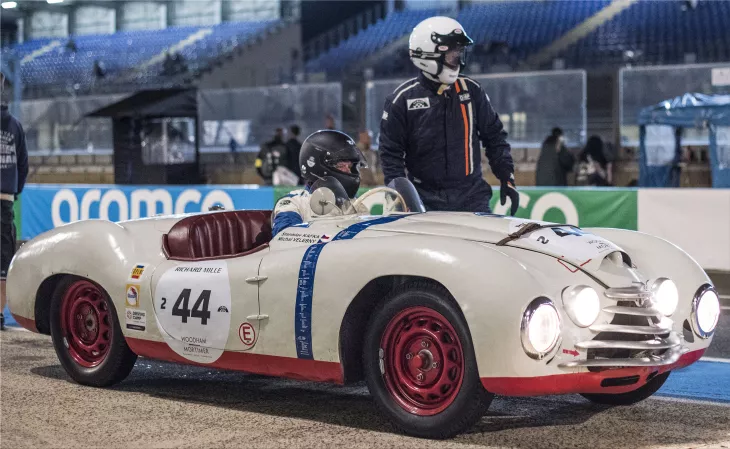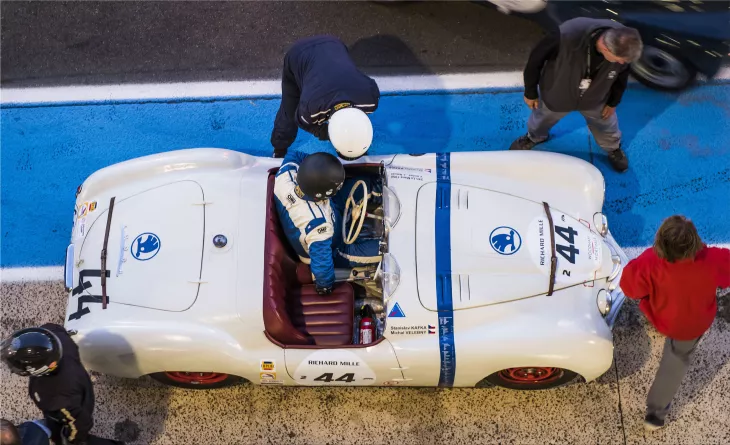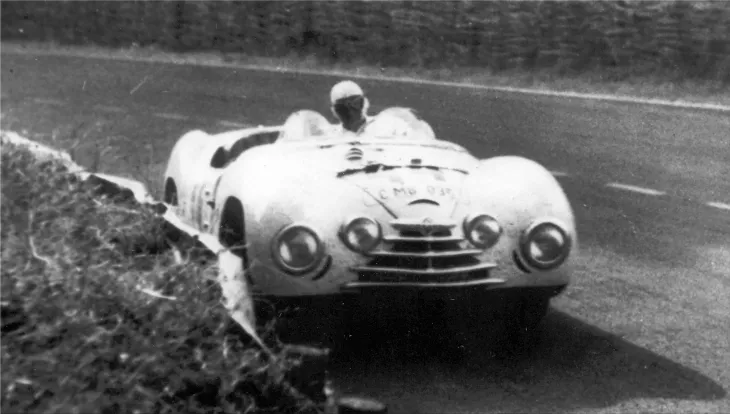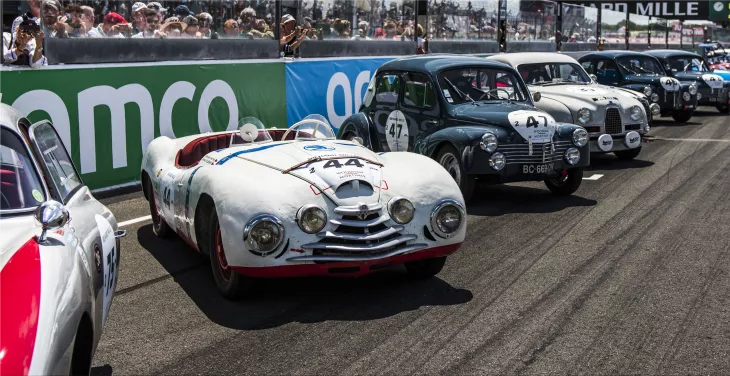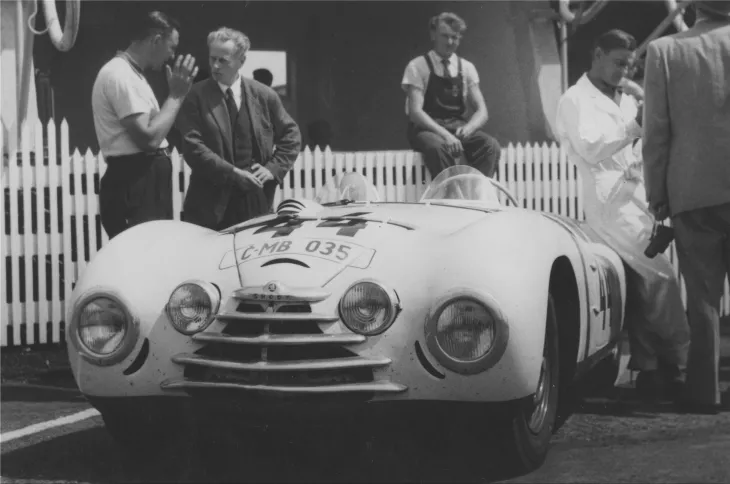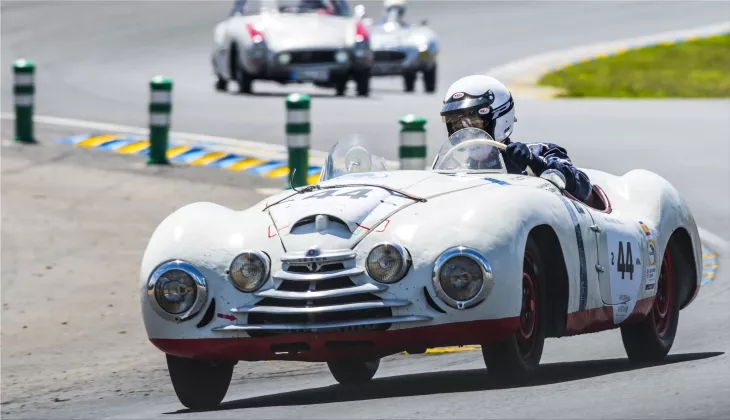The manufacturer from Mlada Boleslav has been active in motorsport for 121 years. Since then, it has made history with numerous unique racing and rally vehicles. In 1946, Skoda impressed with the attractively designed 1101 model called "Tudor" because of the typical two-door body, based on the English "two-door." The new model was quickly in international demand because of its many successes in motorsport. For example, the vehicle took part in the 2,649 km Rajd Polski Rally (1948), as well as in the South American Montevideo – Melo – Montevideo Rally and the circuit race in Spa, Belgium. In addition, three 'Tudor' four-seaters covered 1,972 km in 24 hours and crossed the finish line together.
At the Czechoslovak Grand Prix in Brno (1949), the Skoda Sport, derived from the Tudor, successfully held its own against the competition with numerous parts from the production vehicle and a hand-made aluminum pontoon body. The car was then modified under the Le Mans 24-hour race regulations. The factory team of Vaclav Bobek and Jaroslav Netusil took to the track at the 18th edition of the race on June 24, 1950, on the Sarthe.
The Skoda Sport was prepared for the night hours of the race with two additional headlights. Special openings in the radiator grille improved the cooling of the drum brakes on the front wheels, and the wheelbase, which was extended to 2,150 mm, ensured more excellent driving stability. Including tools and spare parts, the weight was a low 700 kg. The vehicle had a water-cooled four-cylinder with a displacement of 1,089 ccm, and the electrics came from the Czech manufacturer PAL 12 V. The Skoda Sport had an output of 50 hp (37 kW) on cross-ply tires from Barum at 5,200 rpm. He drove on a unique fuel mixture of gasoline, ethanol, and acetone. The top speed was 140 km/h, and the consumption was only twelve liters per 100 km at the time.
During the first 13 hours of the race, the Bobek/Netusil driver team in the Skoda Sport fought their way up to second place in the category up to 1,100 ccm and a sensational fifth place in the overall rating by power coefficient.
The 24-hour race in Le Mans was held for the first time in May 1923. Historic vehicles compete on the 13.626-kilometer route every two years as part of the Le Mans Classic. Unfortunately, due to the pandemic, Skoda Sport couldn't participate in the 70th anniversary of its Le Mans start in June 2020. Instead, it will take place in June 2022.
In this year's edition, the vehicle that had already competed in the 1950 24-hour race in Le Mans started for the first time. The extensively restored Skoda Sport was driven by Stanislav Kafka and Michal Velebny, the coordinator of the Skoda Sport restoration workshop. Back then, his grandfather, Josef Velebny, designed the body of the Skoda SPORT. As with its first start in 1950, the car took to the track again this year with starting number 44. The second Skoda Sport ever made took part in the classic race in Le Mans in 2006.
Michal Velebny emphasizes: "We worked on restoring the vehicle for six years." Finally, with the return of Skoda Sport to Le Mans this year, we have achieved our goal. The car survived the demanding weekend without significant technical problems thanks to permanent and careful maintenance. "A fantastic achievement for a 73-year-old vehicle."
Numerous individual races take place as part of the Le Mans Classic. Registered vehicles from all years of construction from 1923 to 1981 are eligible to start. The organizer divides them into six basic categories and various special categories. The Skoda Sport began in 2022 in the second group, with vehicles from 1949 to 1956.
Each vehicle category drives at the Le Mans Classic in three runs, each 43 minutes long. Halfway through each run, the vehicles come into the pits, where a driver change occurs. The last run begins with a classic Le Mans start: after the starting signal, the drivers sprint to their vehicles, jump behind the wheel, start the engines, and go onto the track.
The checkered flag will be waved in the 43rd minute of the race as soon as the fastest car crosses the finish line. The final result is based on the number of laps completed and the time difference with the winner. A unique coefficient is essential in this case. In a further assessment, vehicles that started in the different groups with the same start numbers were combined into teams.
Numerous vehicles started in class 2 for cars from 1949 to 1956. Stanislav Kafka and Michal Velebny showed strong performances in qualifying and the competition. They could compensate for the Skoda SPORT's lack of performance compared to more powerful or newer vehicles. In the overall ranking of their category, they finished 47th out of 74 crews. According to the power coefficient, the overall ranking was even enough for the 43rd position. A 1954 Jaguar D-Type secured victory.





